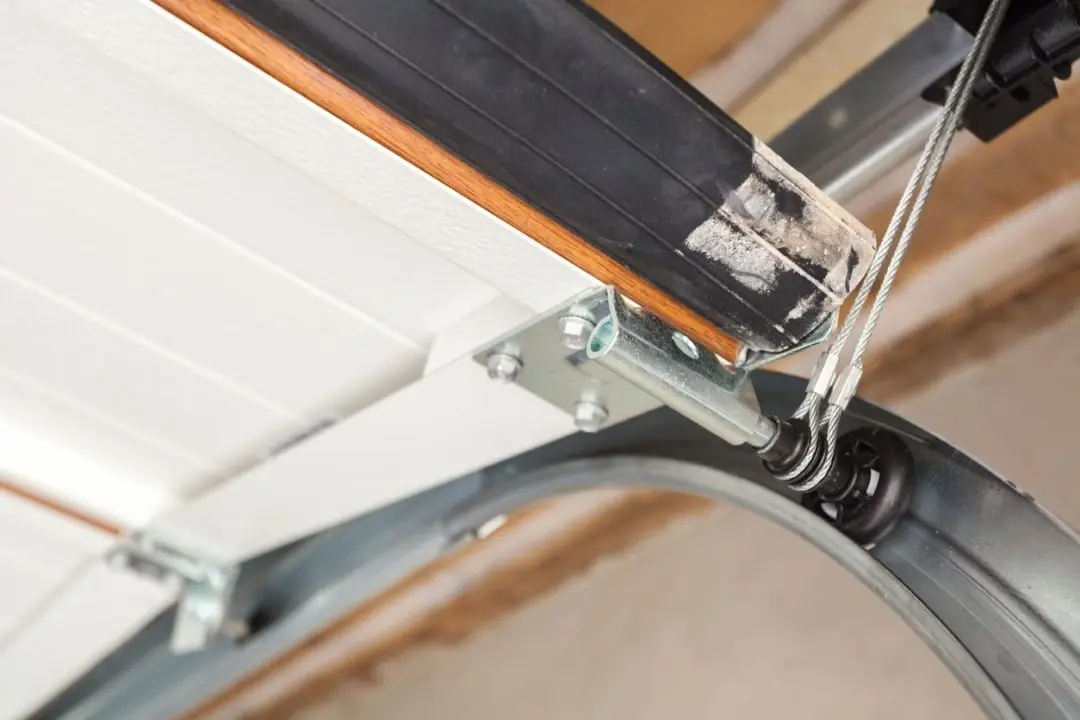A working garage door makes your life easier and keeps things safe. But if the garage door is broken, it can mess up your day. Several issues can happen, but problems with the garage door track are very common.
That is why it’s important for a homeowner to know the basics of garage door track repair, especially about the tracks. This article will help you find track problems and suggest solutions, so you can fix these issues easily.
Key Takeaways
- Discover the importance of well-maintained garage door tracks for safety and functionality.
- Learn to identify common track problems like bends, misalignment, and wear.
- Follow a step-by-step guide to diagnose and address these issues effectively.
- Understand when professional repair or replacement is necessary for optimal results.
- Get valuable preventative maintenance tips to prolong the lifespan of your garage door tracks.
Understanding the Basics of Garage Door Track Repair
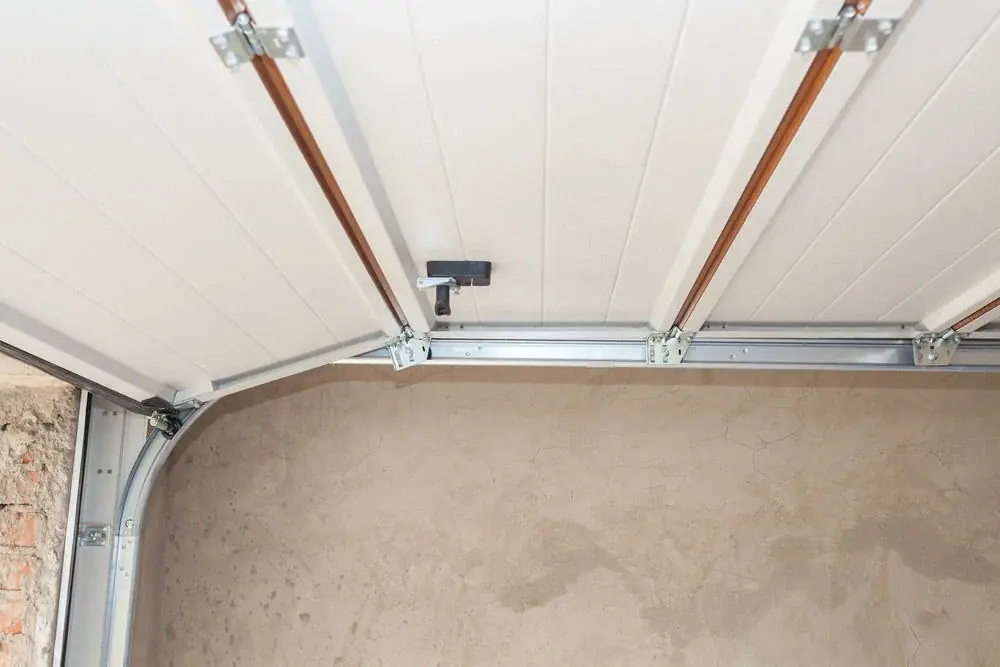
Repairing a garage door track means checking and fixing problems with the metal tracks that help the rollers move.
This is important for making sure the door works correctly. If a garage door track is bent, it can cause the door to stick, jam, or come off the tracks completely.
For a successful repair, it is key to understand how important alignment is. The vertical and horizontal tracks must be straight and lined up correctly. This way, the door can open and close easily without getting stuck.
1. Importance of Keeping Tracks in Good Condition
Taking care of your garage door tracks is very important for a few reasons. First, it affects how long your garage door lasts and how strong its materials are.
Cleaning and checking them regularly can stop dirt and debris from building up. This buildup can create friction, which wears down the tracks and rollers.
Also, keeping your tracks in good shape ensures that your garage door works smoothly and safely. When the track is well-maintained, it puts less stress on the garage door opener and lowers the chance of the door slipping off the tracks. This helps avoid accidents and injuries.
In addition, fixing track problems early can save you from bigger, expensive repairs later on. A bit of care now can help your entire garage door system perform better and last longer.
2. Common Issues with Garage Door Tracks
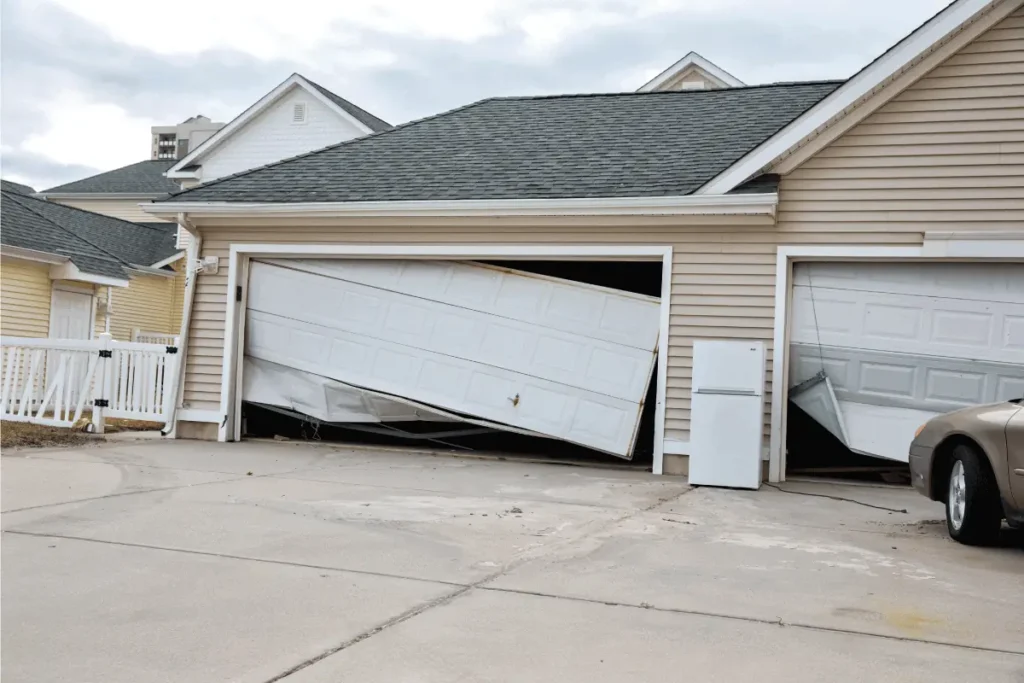
One common problem with garage doors is misalignment of the tracks. This happens when the tracks do not line up correctly. It can cause a noisy garage door that has trouble opening or closing.
Another usual issue is a bent garage door track. This can happen from impacts, obstacles, or wear over time. Bends in the track mess up how the rollers move. This can lead to jerky movements or the door getting stuck. It might even derail.
If you ignore these problems, you could face worse damage. This includes broken cables, damaged rollers, and extra strain on the opener. You might end up needing costly repairs or a complete track replacement.
Step-by-Step Guide to Diagnosing Track Problems
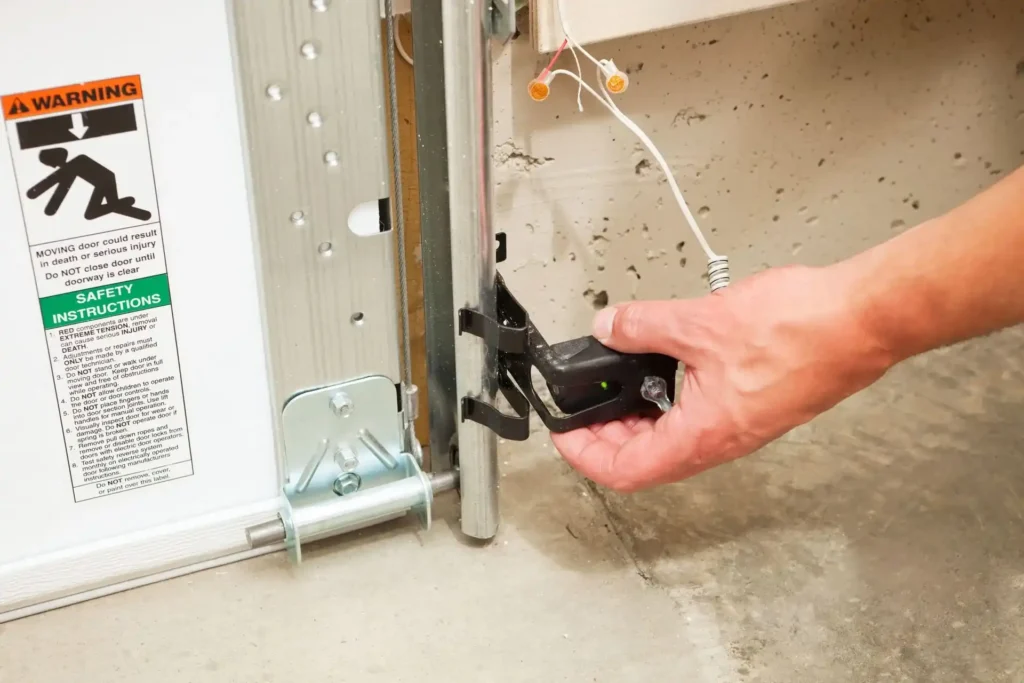
Addressing garage door problems starts with checking the track system carefully. First, look closely at the tracks. Notice any clear signs of damage, like dents, bends, or loose parts.
Next, watch how the door moves when it opens and closes. Pay attention to any strange noises, jerky movements, or places where the door gets stuck. These details can help you find the main issue.
3. Tools Needed for Track Inspection and Repair
Having the right tools is very important for checking and fixing garage door tracks. You will need a strong ladder for safe access.
A tape measure is necessary for checking the alignment and spacing. A level will help you make sure the tracks are straight.
For small fixes, a hammer is useful for tapping bent parts back into their correct position. Pliers help grip and tighten any loose hardware. A socket wrench set will be needed to deal with bolts and nuts.
You should also have a lubricant, like white lithium grease or silicone spray. This helps keep the rollers, hinges, and tracks moving smoothly.
Always remember to disconnect the power supply to the garage door opener before you start any repairs. This will help you avoid electrical issues.
4. How to Identify Signs of Wear and Damage
Identifying signs of wear and damage on your garage door track is important. Early detection can help prevent more serious problems.
Look for dents in the tracks. Dents can block the movement of the rollers. A broken cable that looks loose or hangs down needs your attention now. It can make the door not work and create safety risks.
Also, check for rust or corrosion, especially in places that get moist. You can treat small rust spots, but big corrosion can weaken the tracks and might need replacement.
If you see any of these signs or have trouble using your garage door, fix the problem quickly. This can save you from serious damage and expensive repairs.
Detailed Instructions for Repairing Common Track Issues
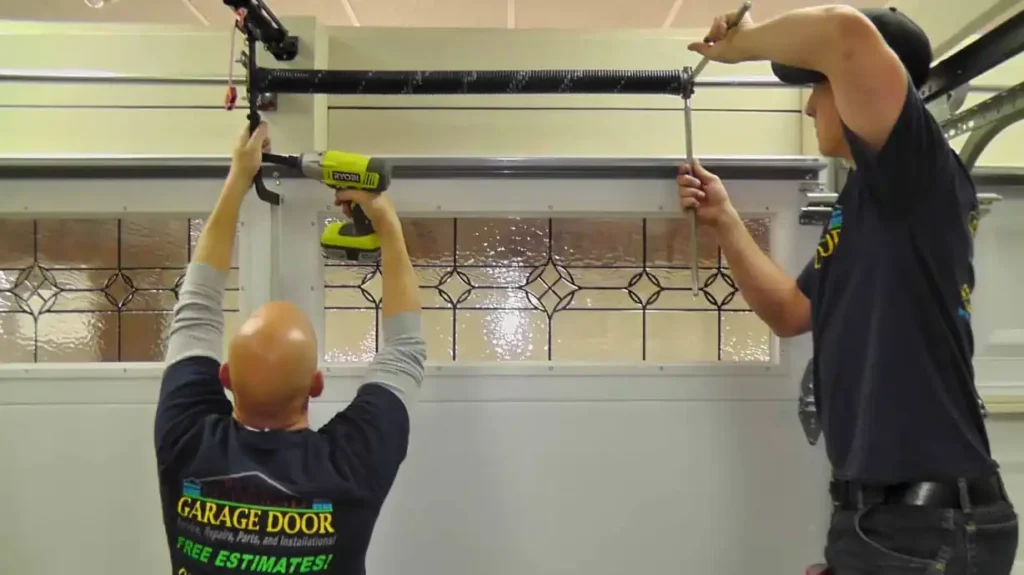
Once you find the problems with your garage door track, you can start fixing it. If the track is just a little bent, you can often straighten it with a hammer and a block of wood. This will help spread out the force evenly.
But if you have bigger issues, like damaged rollers, broken cables, or an out-of-line garage door system, it is better to get help from a repair service. Fixing these problems needs special skill and tools to do it right. This helps to prevent any more damage.
5. Fixing Minor Bends in the Track
Fixing small bends in your garage door track is something most homeowners can do. It only takes a few simple steps and basic tools. First, disconnect the power to the opener. This will stop any accidental operation during the repair.
Next, take a pair of pliers and grip the bent part of the track. Gently push in the opposite direction of the bend. Work slowly along the area until the track is straight.
- Make sure to use a block of wood to support the back of the track while straightening it. This helps to avoid further damage.
- After straightening, check the track visually. Ensure the rollers can move freely along its surface.
- Finally, reconnect the power to the opener. Test the door’s movement and look for any remaining issues or blockages.
6. Adjusting Track Alignment for Smooth Operation
Making sure your garage door tracks are lined up correctly is important for the proper function of your garage door. Over time, these tracks can move a bit because of vibrations and regular use, causing misalignment.
To fix this, first loosen the screws that hold the tracks to the garage wall or ceiling. Use a level to help you tap the tracks back into place, making sure they are level and parallel to each other.
Once you are happy with the alignment, tighten the screws firmly. Doing regular maintenance that includes checking and adjusting the track alignment can help avoid bigger problems and make your garage door system last longer.
When to Replace vs. When to Repair Your Garage Door Track

When you need to choose between fixing or replacing your garage door track hinges, think about how serious the damage is and how well the whole system is working.
You can usually fix small bends and dents. But if there is big damage, like serious rust or bending, you should consider garage door track replacement.
If the damage is bad or if you keep having to pay for frequent repairs, replacement is a better and longer-lasting choice.
It will make your garage door work well again and keep it safe. Talking to a trusted garage door expert can help you find the best solution for your needs.
7. Assessing the Severity of Track Damage
Knowing when to call a professional for help is very important when you have issues with your garage door track. Minor bends can often be fixed with DIY repairs. But serious damage, like deep kinks, many bends, or a twisted track, needs a professional’s help.
If there are other problems too, like a broken garage door spring, frayed cables, or a door that isn’t lined up right, trying to fix it yourself can make things worse and put you at risk. In these cases, it is better to be safe and call a trained technician.
Professional technicians have the right skills, experience, and tools to check the damage safely. They can suggest the best solution and make sure your garage door system works smoothly and safely.
8. Benefits of Replacing Severely Damaged Tracks
Replacing badly damaged garage door tracks has many benefits. It can make your garage safer, more durable, and save you money in the long run.
New tracks help your garage door move smoothly and safely. This keeps you from facing accidents or injuries caused by faulty tracks.
New materials for tracks are built to last. They can resist wear and tear, rust, and damage from impacts. This means you will need fewer repairs, and your garage door system will last longer.
Though changing your tracks may require some money upfront, it stops you from spending more on frequent repairs.
You will also lower your chances of needing unexpected emergency services later on. In the end, getting professional garage door service for track replacement gives you peace of mind and reliable performance for years ahead.
Preventative Maintenance Tips for Garage Door Tracks
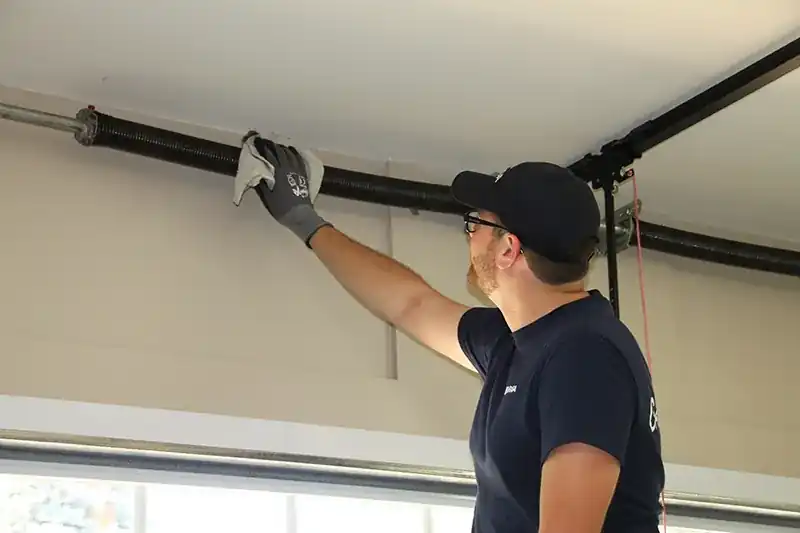
Regular maintenance is very important to make your garage door tracks last longer and work well. Doing simple things to prevent issues can save you time, money, and stress later on.
If you include inspections and cleaning in your routine, you can stop small problems from turning into big ones. This way, your garage door will run smoothly and dependably.
9. Routine Maintenance Practices to Extend Track Life
Simple maintenance practices can really help your garage door tracks last longer. One good practice is to regularly apply lubricant.
Using a lubricant like white lithium grease or silicone spray on the tracks, rollers, hinges, and springs lowers friction. This keeps everything working smoothly and quietly.
You should also clean the tracks often. Use a damp cloth to wipe away dirt, debris, and grime. This stops buildup that can slow down the rollers and cause early wear on the garage door materials.
It’s important to check the tracks for any damage. Look for dents, bends, or loose parts. Fixing these problems right away can stop them from getting worse. This can help you avoid bigger repairs or replacements later.
10. Seasonal Adjustments for Optimal Performance
As part of good upkeep, your garage door may need small adjustments based on the season. This way, it works well all year. In winter, make sure the tracks are clear of ice and snow. Snow and ice can block the door’s movement and stress the system.
Also, check the track alignment after extreme temperature changes. Metal can change size when it gets hot or cold. A slight shift can happen, so adjusting the alignment when needed keeps the door working smoothly.
Finally, pay attention to lubrication during cold months. Grease can become thick and not work as well. Using a lubricant designed for cold weather helps keep everything running well throughout the year.
Conclusion
Maintaining your garage door track repair is important for smooth operation and safety. Here are some repair tips to help your garage door work well. Inspect your tracks regularly and make repairs on time. This can help you avoid expensive replacements. Always check for track alignment and fix any signs of wear quickly.
You can handle small bends and adjustments if you have the right tools and knowledge. If there is serious damage, you may need to get a professional to replace them.
Keeping your garage door tracks well-maintained will help them last longer. Your efforts now will save you time and money later.
Frequently Asked Questions
1. What are the signs that my garage door track needs repair?
If you notice signs of wear on your garage door rails, such as dents, bends, or rust, it may indicate a problem. A noisy garage door or trouble when opening and closing can also be signs that repairs are needed.
2. How often should I inspect my garage door tracks?
To keep your garage door system in good shape, check the garage door tracks at least once a month. Doing this regular maintenance can help you find possible problems early.
3. Can I repair a garage door track myself?
Homeowners can do some simple DIY track repairs. They can fix small bends using easy steps. However, it’s best to get professional help for more complex problems or when you need expert garage door repair services.
4. What is the average cost of repairing a garage door track?
Garage door repair costs can change based on how bad the damage is and the prices for labor. Generally, you should plan to pay between 100 and 350 dollars for track repair if you hire a professional garage door repair company.
5. Are there any specific tools required for DIY track repairs?
For simple DIY track repairs, homeowners should have some basic tools. You will need a hammer, pliers, a level, measuring tape, and the right safety gear. It is good to have these tools available for small repairs.
6. How do I fix my garage door track?
Fixing a bent garage door track usually means straightening the metal. You can use a hammer and a wood block for support. But for tough problems or misalignment, it’s best to call a professional repair service.
7. Can a bent garage door track be fixed?
A bent track with small bends can usually be fixed by straightening the metal. But if there are severe bends or damage, you may need to get professional help from a garage door service.
8. Can you replace a garage door track?
Yes, replacing the garage door track is a common service offered by garage door repair companies. They can replace the whole track or just the damaged parts. This way, your emergency garage door will work properly.
9. What is a garage door track?
A garage door track is a metal rail system that is put on the ceiling and the side of the door. It helps guide the rollers. This allows the door to move up and down smoothly. For the garage door to work well, the tracks must be properly aligned.

